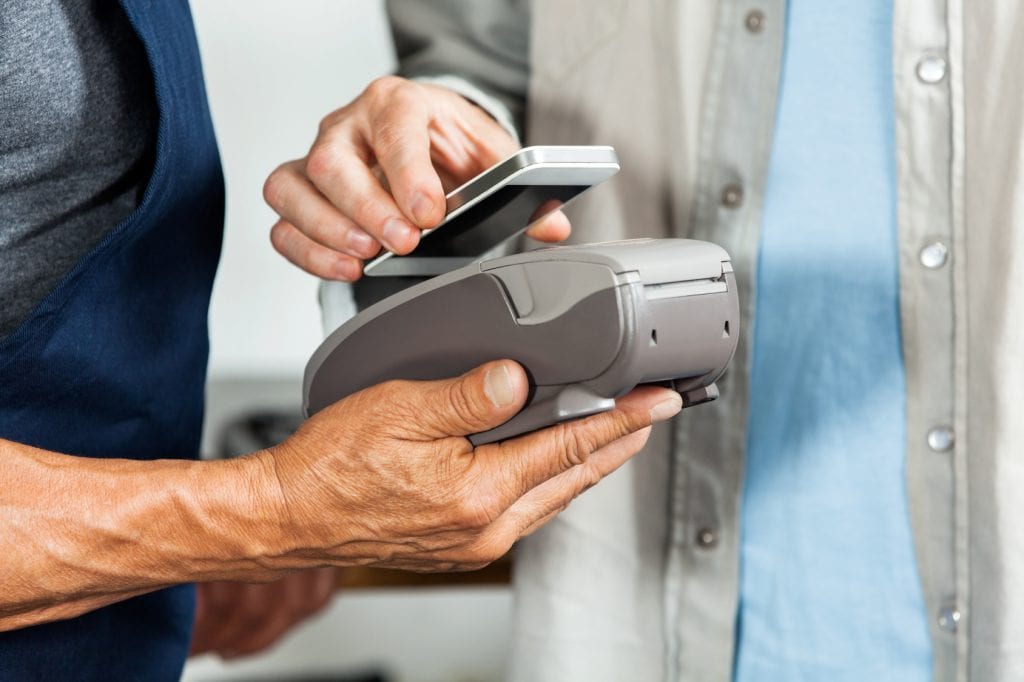Heidi Hinder, an artist in the UnitedKingdom, thinks that in the future we may pay with our handshakes,hugs, and high-fives.
While most payments industry executives think the future ofpayments resides in mobile devices, Hinder is testing the idea thatwearable technology could make payments more personal byencouraging personal interaction. In her project “Money No Object”at the Watershed in Bristol, she is using RFID technology to createwearable devices that allow people to make payments with gesturesand contact.
The goal is to go beyond the contactless technology that makespayments faster today. In fact, part of the plan is to slow downthe payments process. Hinder said she noticed that with cardpayments, and especially tap-and-go technology, it is possible tomake a purchase in a shop and barely acknowledge the clerk. Bybuilding the payment device into rings, gloves, and other jewelryand fashion accessories, she wants to add an element of humaninteraction back into payments.
“I want people to be very conscious of making a payment,” shesays. “The acknowledgement and physical interaction make peopleconscious of the payment.”
Last year, MasterCard released its PayPass AdoptionStudy that showed people with contactless accounts spend 30percent more on average using their Paypass cards. MasterCard saidthis could translate into as much as $600 in incremental spending,so being more conscious of making payments could be a good thingfor a lot of people.
Being an artist, Hinder wants to see her work in a museum, but notas an exhibit. Instead she wants to help museums function moreeffectively than they do now. She envisions her payment devicesbeing sold in museum shops as wearable art that contains a paymentschip. She is in talks with British museums about creating a systemthat would allow visitors to buy wearable devices and load themwith money. The could then use them to make donations to themuseum, buy things in the gift shop or café, and even, at thewhimsical end, create their own art to make a payment. One exampleof her technology in action was putting chips into tap shoes andallowing a dancer to make a payment through a dance.
Museums in Britain are free to enter, sofinding ways to change the donation box from a half-full Lucitecube to something more interesting to the donor is among Hinder’sgoals. Perhaps giving a docent or even a statue a high five may bea way of drawing donations.
There is an opportunity here to develop a network of paymentsacross a number of museums and cultural attractions. It is not hardto imagine a kind of cultures lovers’ medallion that could be usedat various sites all linked into the same network. For tourists orinstitution members, such a device could not only provide a way topay, but also a way for museum staff to recognize thesupporters.
The system could be made more open by connecting it to one of themajor payments network. The key would be demonstrating a use case.While the concept of the interactive payment lends itself tospecialized use cases, it could be applied wherever specificphysical behavior happens. A dance club could pay prizes (either incash or in-house credit) to people who dance for a certain amountof time or win a dance contest. Gyms could use the technology toencourage people to complete an exercise set – if you don’t finishyour push-ups you get an extra charge. Politicians could collectdonations through handshakes by offering commemorative rings loadedwith value.
Along with changing the way people pay and interact, she thinksthat the transition to new forms of payments could help save money.She previously served as a visiting artist at the Royal Mint, whichmakes currencies for over 80 countries.
“It seems strange to have people paying a huge amount of money toproduce money,” she says. “What form will future paymentstake?”
For more on Hinder’s work, visit her website.
